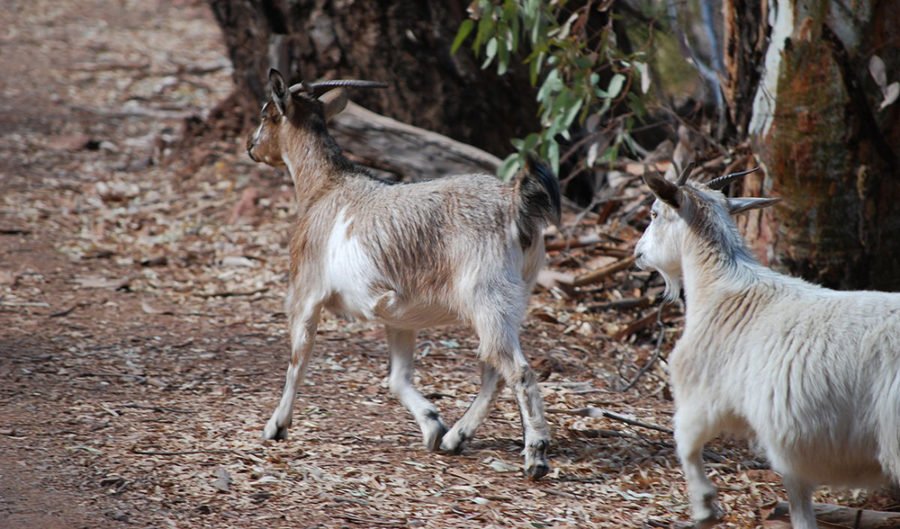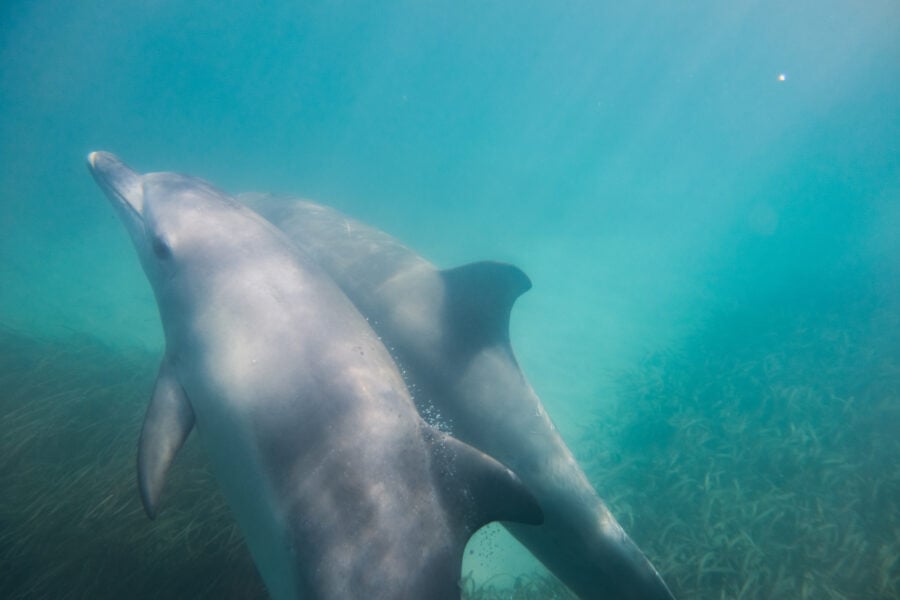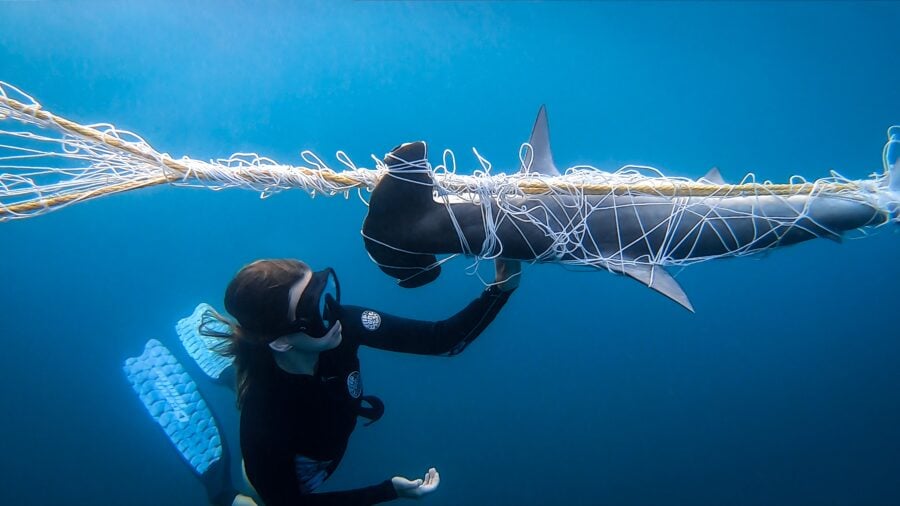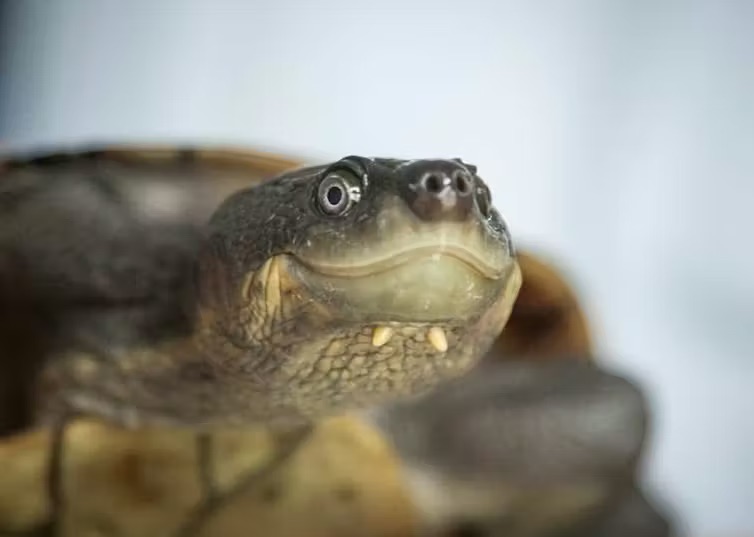Death-row dingoes plan blocked

A PLAN TO deploy dingoes to kill feral goats to protect endangered rainforest on a tiny Queensland island has been blocked because of a rare shorebird.
If that sounds complicated, it’s because it is.
The plan, which the Queensland Minister for Environment Dr Steven Miles called a “cruel experiment” in a statement released yesterday, was to introduce desexed dingoes onto 4sq.km Pelorus Island, 80km north of Townsville. The tiny rocky island is part of the Great Palm Island group in the Great Barrier Reef Marine Park.
The native predators, which had already started to be released onto the island, would be used to cull a population of feral goats, which are eating away the island’s rare littoral rainforest.
To avoid the dingoes then becoming a pest themselves, they would be implanted with a pill that would release a deadly dose of 1080 poison in two years’ time as a ‘failsafe’ if they could not be shot once the goats were eradicated.
“As a council we have an obligation as the trustees of this land, the custodians of this land, to control or eradicate pests,” the Mayor of Hinchinbrook Shire Council Ramon Jayo told the ABC, which first reported on the controversial project last month. Ramon added that previous attempts to eradicate the feral goats, such as trapping and shooting, had been unsuccessful due to the island’s difficult terrain.

The plan was blocked to protect beach stone-curlews (also known as Beach thick-knee) which are listed as vulnerable in Queensland. (Image: Summerdrought / Wikimedia)
Project blocked to protect rare shorebird
However, the council’s plan – which was opposed by animal rights activist organisations including the RSPCA – will no longer be going ahead after the Minister issued an Interim Conservation Order under the Nature Conservation Act 1992 yesterday, requiring the council cease the project immediately.
Interim Conservation Orders are designed for use where there is a likelhood of a significant detrimental impact on threatened wildlife – in this case, the Minister was advised that the introduced dingoes could endanger the vulnerable beach stone-curlew (Esacus magnirostris).
“I will not stand by while one of the main predators of this vulnerable bird is deliberately released into its habitat,” Dr Miles said.
Beach stone-curlews are listed as vulnerable in Queensland and as ‘near-threatened’ by the IUCN. There is estimated to be about 5000 beach stone-curlews left across Australia.
According to the Queensland Government’s species database, Wildlife Online, as of April this year the beach stone-curlew is not listed on the main islands in the Great Palm Island Group, Palm or Orpheus islands, and there has only been a single sighting of the species on Pelorus Island, back in 2002.
Glen Chilton, a bird expert and biology professor at James Cook University in Queensland said while he wasn’t aware of the birds on the island, that it was the type of habitat in which the species might be found. “The forces acting against the beach stone-curlew are myriad, and predation by canids [dogs] is one of them,” he said.
Glen, who is not involved in the project, also pointed out that the issue is particularly complex. “The issue of Pelorus Island, invasive goats, dingoes, and beach stone-curlews is more complex than most. Beyond biology, there are moral issues,” he said.

The dingoes would be used to control the feral goats, then killed to avoid becoming a pest on the island themselves. (Image: Sam Fraser-Smith / Wikimedia)
Death-row dingoes
Most of the controversy around the plan, including opposition from the RSPCA, has been related to the use and fate of the ‘death-row’ dingoes themselves.
“I was shocked to learn of this cruel experiment but even more alarming is the lack of thought for the native animals on the island,” the Environment Minister said in his statement blocking the project.
“Pest control should always be carried out in the most humane way possible – not by death-row dingoes,” said Dr Miles. “As of today no dogs can be released on to Pelorus Island and any wild dogs already on the island must be removed within the next 14 days.”
In response, Hinchinbrook Shire Council released its own statement saying it will comply with the Minister’s orders – but Mayor Ramon Jayo pointed out in the statement that “it was the Minister’s own government that issued approvals for the trials in the first instance,” he said, adding that his council had taken an unfair “bucketing” over the issue.
The project had been approved by an independent Animal Ethics Committee.
“Whilst I can vaguely understand Dr Miles’ actions, which in essence arise from an alleged new issue (curlews) and not because of the terms of the project itself, it appears to me that the Minister for Agriculture and Fisheries has no handle on what is happening in her department,” he said.
In February this year, dingoes were released into a Victorian wildlife reserve as a pilot project in a similar effort to trial the native predators as a form of pest control.
The council and researchers involved in the Pelorus Island project will now have to go back to the drawing board in their efforts to control the island’s feral goat population.
READ MORE:




